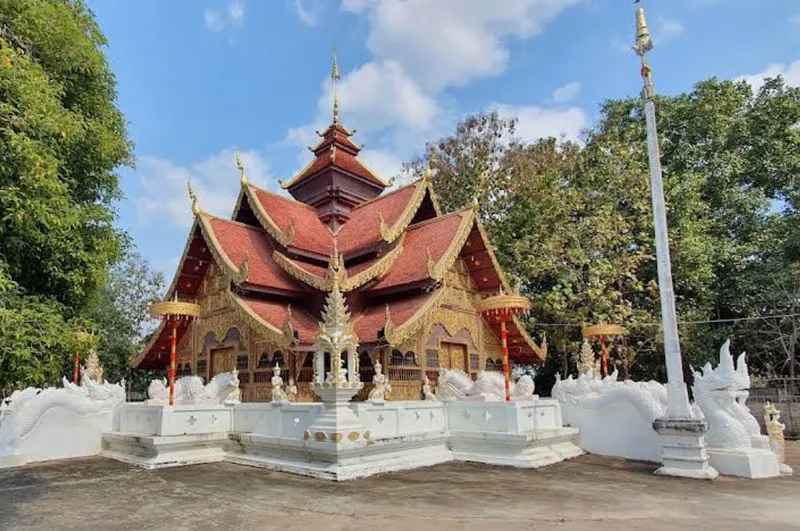Wat Pha Daeng Luang

Rating: 3.6/5 (11 votes)
Lampang attractions
Attractions in Thailand
Operating day: Daily
Operating time: 08.00 - 17.00
Wat Pha Daeng Luang is located in Ban Muang, Village No. 6, Chae Hom Subdistrict, Chae Hom District, Lampang Province. It is affiliated with the Mahanikaya monastic order. The temple grounds cover an area of 8 rai. It was established in 1937 (B.E. 2480) and was granted official boundary recognition (Wisungkhamsima) on October 24, 1939 (B.E. 2482). The current abbot is Phra Khru Panyaprasutkhun (Intapanyo).
Wat Pha Daeng Luang was built in the Lanna architectural style and serves as a spiritual center for the local community, fostering peace, unity, and mutual compassion. The temple regularly organizes summer ordination programs for novice monks. Currently, there are 5 monks and 8 novices residing at the temple.
Although there is no definitive written record of the temple’s original founding year, oral accounts passed down by elders in the Chae Hom District—many of whom are over 80 years old—along with limited written evidence, suggest a long historical presence. Among the most important artifacts are more than 500 palm-leaf manuscripts written in Lanna script preserved in the temple’s scripture hall. The most prominent religious structure is a large stupa, which stands as a spiritual landmark of Chae Hom and reflects the deep faith of the local people in Buddhism during earlier times.
In 2004 (B.E. 2547), a group of students from the Department of Thai Art, Faculty of Fine Arts, Chiang Mai University, led by Mr. Chankanit A-worn and supported by six students, conducted a survey of the palm-leaf scriptures and local artistic designs at the temple. The author of this temple history participated in the activity and helped transcribe the notes inscribed at the end of each manuscript. These records revealed events from nearly 300 years ago, consistent with the oral traditions passed down through generations.
Wat Pha Daeng Luang is situated to the east of a river and west of the Wang River. It is built on a slightly elevated mound, approximately 7 meters above the surrounding rice fields on its southern side. The temple grounds are shaded by a variety of large trees, some of which provide clues to the temple’s age. For example, the stump of a once-massive jackfruit tree measures 7.80 meters in circumference, while a mango tree measures 4.20 meters. There are also several other large trees, including bua nak (Terminalia), santol, and mango trees with trunks measuring around 3.50 meters in circumference.
Comment
| Keyword (Advance) |
 Region
Region
|

 Category:
Category:  Group:
Group: